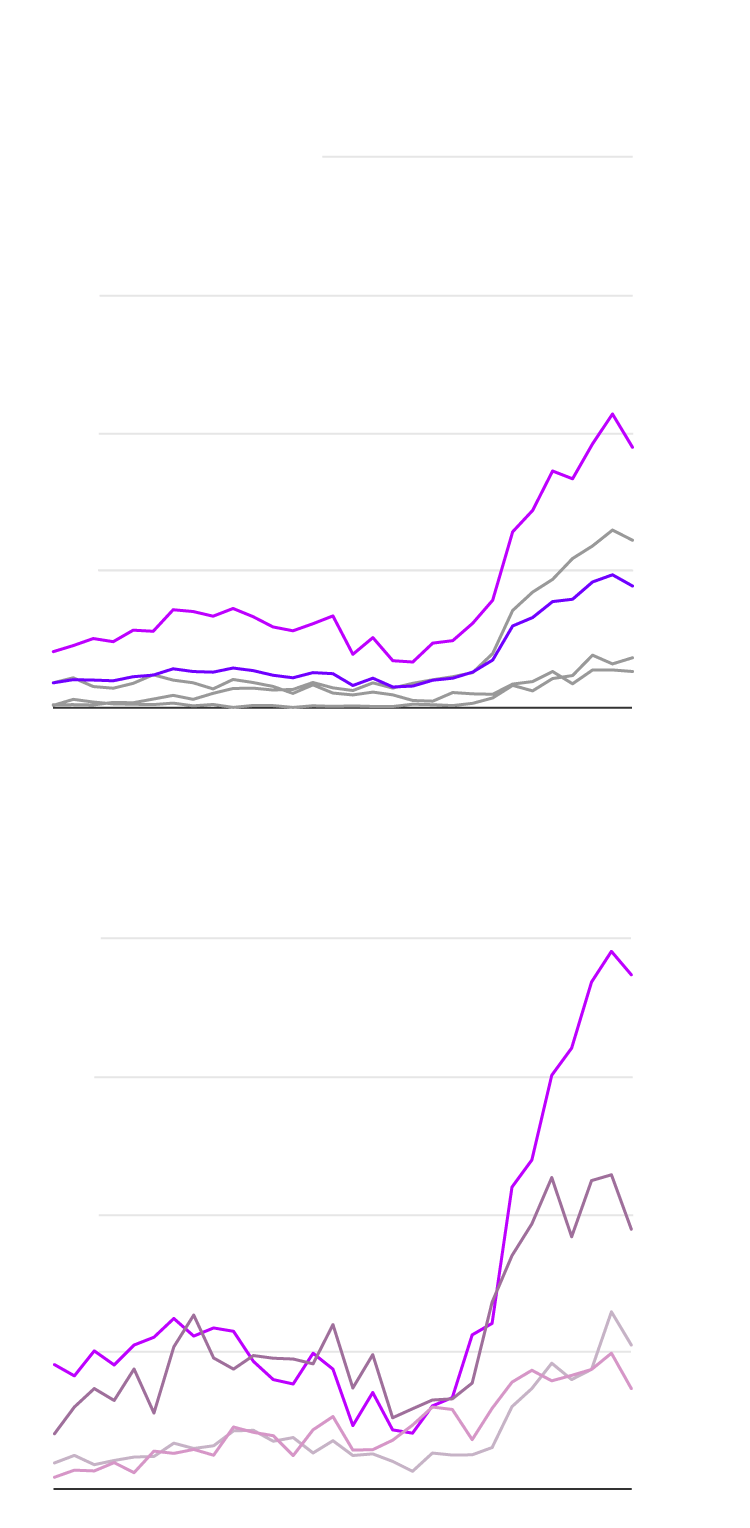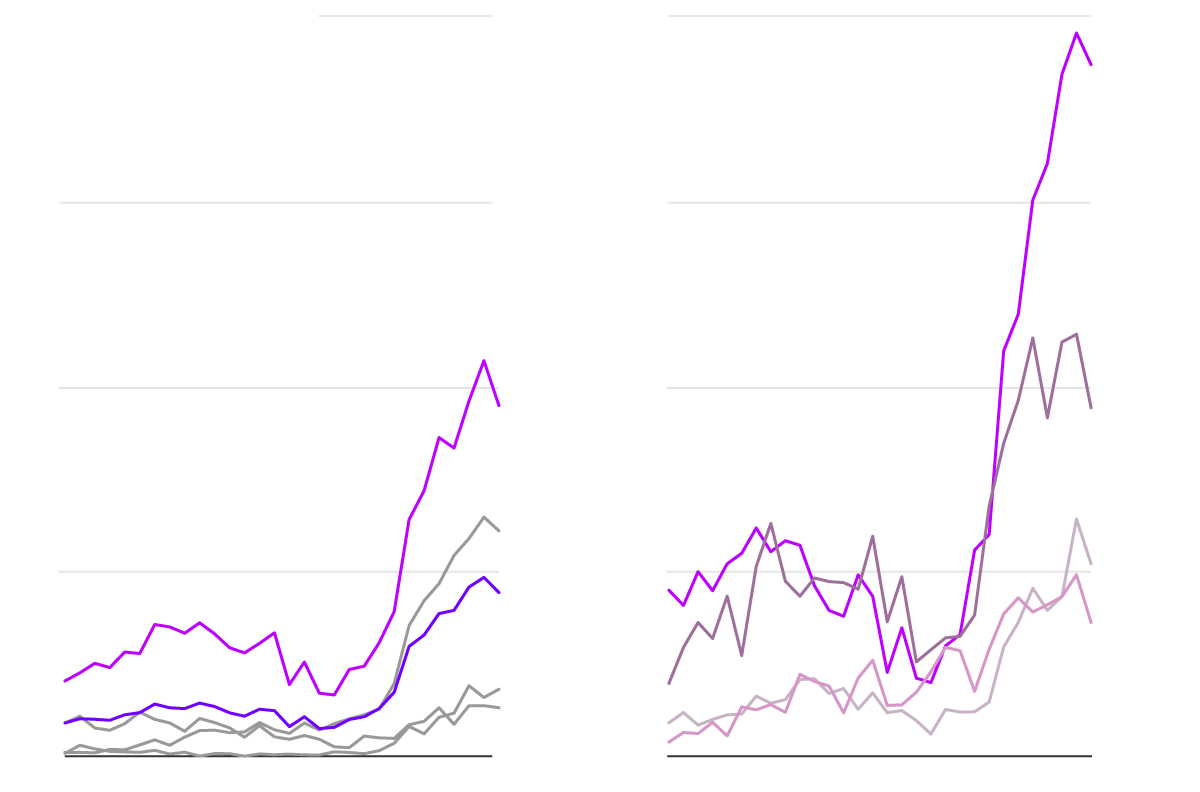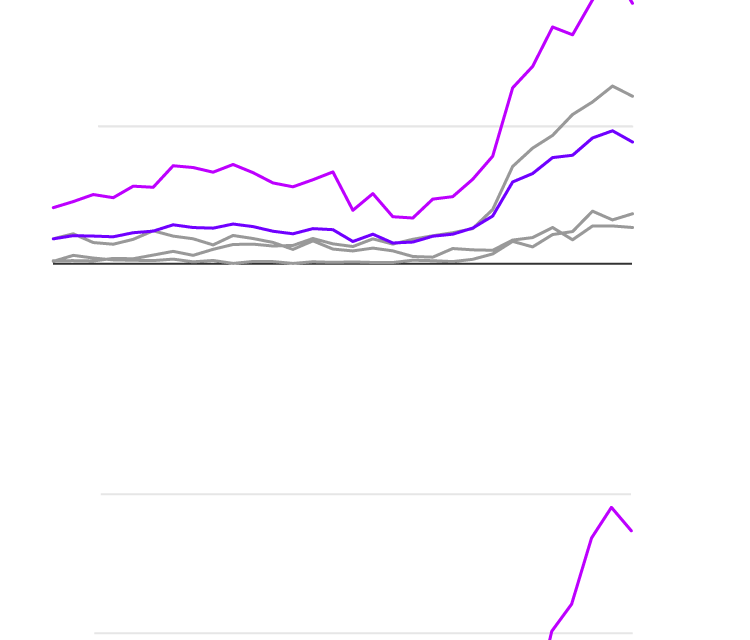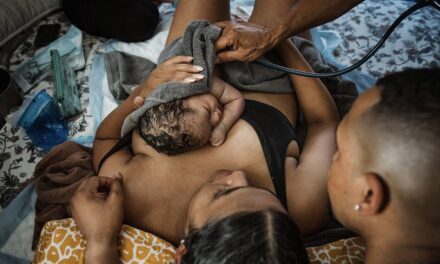Over the past six years, Baltimore has endured one of America’s deadliest drug epidemics. Fatal overdoses have fallen surprisingly hard on one group: Black men currently in their mid-50s to early 70s.
While just 7 percent of the city’s population, they account for nearly 30 percent of drug fatalities — a death rate 20 times that of the rest of the country.
About the series
The reporters examined the city’s response to rising overdose deaths as part of The New York Times Local Investigations Fellowship. This is the second part in a series exploring Baltimore’s overdose crisis. Read the first part here.
An examination by The New York Times and The Baltimore Banner — drawing on previously undisclosed autopsy records, more than 100 interviews and a novel data analysis — revealed the impact on these men, who make up part of a little-recognized lost generation.
Black men born from 1951 to 1970 are dying of overdoses in Baltimore at an extremely high rate — and have been for decades.
More than 4,000 have been killed since 1993 amid waves of drugs: first heroin and crack cocaine, then prescription opioids and now fentanyl — the deadliest drug threat America has ever seen.
Though startling numbers of older white men and Black women died as well, this group’s fatal overdoses have elevated Baltimore’s rate far above other cities’.
Today, the introduction of fentanyl into the city’s drug supply has driven the death rate to new heights. Black people of this generation are more likely to die of overdoses than cancer or Covid at the height of the pandemic; drugs are essentially tied with heart disease for their top killer. “I can’t think of another situation like this,” said Robert Anderson, chief of statistical analysis and surveillance at the Centers for Disease Control and Prevention.

People born between 1951 and
1970 have fatally overdosed at
the highest rates in Baltimore.
800 deaths per 100,000
BORN
BETWEEN:
1951-
1970
1971-
1990
1991-
2010
1931-
1950
Within that generation, Black men have
far exceeded other demographic groups.
Black
women
White
women

800 deaths per 100,000
People born between 1951 and
1970 have fatally overdosed at
the highest rates in Baltimore.
Within that generation,
Black men have far exceeded
other demographic groups.
BORN
BETWEEN:
1951-
1970
1971-
1990
Black
women
White
women
1991-
2010
1931-
1950

This chart shows decades of fatal overdoes among
Black men in Baltimore, with those born between
1951 and 1970 highlighted in dark purple.
118 out of
155 total deaths
As they got older, the bulk of the city’s
overdose victims aged with them.
In the mid-2000s, fatal drug overdoses
dropped to an all-time low. But men of
this age still died the most.
In 2013, as these men entered middle age,
fentanyl began making Baltimore’s drug
supply more addictive and extremely deadly.
277 out of
465 total deaths
By 2022, as these men were in their
early 50s to early 70s, they were dying
in tremendous numbers.

This chart shows decades of fatal overdoses among Black men in Baltimore, with those born between 1951 and 1970 highlighted in dark purple.
118 out of
155 total deaths
As they got older, the bulk of the city’s overdose victims aged with them.
In the mid-2000s, fatal drug overdoses dropped to an
all-time low. But men of this age still died the most.
In 2013, as these men entered middle age, fentanyl began making
Baltimore’s drug supply more addictive and extremely deadly.
277 out of
465 total deaths
By 2022, as these men were in their early 50s to early 70s,
they were dying in tremendous numbers.
Many of those men now live in subsidized apartments for seniors that residents say are awash in drugs.
Lonely grandparents and retirees who have been fighting their addiction for decades are suddenly surrounded by illicit temptations, in buildings where buying drugs can be as easy as walking down the hall. The number of deaths shot up during the pandemic.
At least 31 of the 50 addresses where people have fatally overdosed in Baltimore most often since 2018 are advertised as senior housing complexes. More than 340 people over 50 have died in those buildings.
This information comes from previously undisclosed autopsy records that became public only after The Banner won a lawsuit against the state’s Chief Medical Examiner’s Office.
“I feel like I work at the morgue sometimes,” said Larnell Robinson, tenant council president of Rosemont Tower, where 15 people over 50 have died from overdoses since 2018.
Their lives were shaped by forces that have animated the city’s drug crisis for decades.
Half a century ago, manufacturing jobs began disappearing in an industrial city where Black families had few other opportunities to build wealth. By 1980, nearly half of Baltimore’s Black men under the age of 30 were out of work — a level similar to Black unemployment during the Great Depression.
At the same time, an influx of highly addictive illegal drugs created a lucrative but corrosive shadow economy. Some young people turned to dealing drugs and then using them. Many were arrested and incarcerated, never finding jobs that let them move ahead.
Mayor Brandon Scott said in an interview that the causes of disparities in overdoses were apparent to him. When Black men are “denied jobs, denied good education, denied the opportunity to be trained in any of the places that other folks are working, this is what you get,” he said.
“As a Black man who lives in Baltimore, I know, because we’ve seen it our whole lives,” he added.
There have been few targeted efforts to help older Black men.
The city has concentrated its drug education efforts on the young, and the battle against overdoses in senior buildings has largely been left to people with little expertise — a nonprofit program coordinator here, an apartment manager there.
City health officials said they had taken steps to address the issue, including training residents at more than a dozen senior apartments to use naloxone, the generic name for Narcan. In an interview, Mr. Scott said the city’s efforts did not target any particular demographic group but served large numbers of older Black people because they were most affected by addiction.
The city also said it had been examining deaths in senior buildings and overdose data related to older adults for a year and a half. The state Health Department said that it had awarded a $30,000 grant to hire recovery specialists for one of the city’s hardest-hit senior buildings, and that it would support more related studies and programs in the future.
Managers at some buildings have sought out funding on their own and are trying to stem overdoses with new initiatives, such as converting a game room into an office where addiction specialists work full time.
This comes amid an overdose crisis of unprecedented proportions in Baltimore.
Last week, The Times and The Banner reported that Baltimore had become the epicenter of the worst drug crisis ever seen in a major American city. The city’s death rate from 2018 to 2022 was nearly double that of any other large city — a fact not known by several top leaders, including the mayor and the deputy mayor, who used to lead the city’s Health Department.
The city once had an aggressive overdose prevention strategy, but as officials became preoccupied with other crises, many of their efforts stalled.
An earlier version of a chart in this article incorrectly indicated the overdose death rates in Baltimore for members of four generations. The rates were somewhat elevated. For instance, for those born from 1951 to 1970, the rate in 2022 was 373 deaths per 100,000 people, not 414 deaths per 100,000 people.





